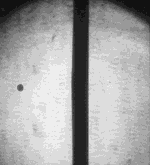
Photo from wikipedia
Abstract We estimate the shear wave splitting parameters vis-a-vis the thicknesses of the continental lithosphere beneath the two permanent seismic broadband stations located at Dhanbad (DHN) and Bokaro (BOKR) in… Click to show full abstract
Abstract We estimate the shear wave splitting parameters vis-a-vis the thicknesses of the continental lithosphere beneath the two permanent seismic broadband stations located at Dhanbad (DHN) and Bokaro (BOKR) in the Eastern Indian Shield region. Broadband seismic data of 146 and 131 teleseismic earthquake events recorded at DHN and BOKR stations during 2007–2014 were analyzed for the present measurements. The study is carried out using rotation-correlation and transverse component minimization methods. We retain our “Good”, “Fair” and “Null” measurements, and estimate the splitting parameters using 13 “Good” results for DHN and 10 “Good” results for BOKR stations. The average splitting parameters (ϕ, δt) for DHN and BOKR stations are found to be 50.76°±5.46° and 0.82 ± 0.2 s and 56.30°±5.07° and 0.95 ± 0.17 s, and the estimated average thicknesses of the anisotropic layers beneath these two stations are ∼ 94 and ∼109 km, respectively. The measured deviation of azimuth of the fast axis direction (ϕ) from the absolute motion of the Indian plate ranges from ∼8° to 14°. The measured deviation of azimuth of the fast axis direction (ϕ) from the absolute motion of the Indian plate ranges from ∼8° to 14°. The eastward deviation of the fast axis azimuths from absolute plate motion direction is interpreted to be caused by induced outflow from the asthenosphere. Further, the delay time found in the present analysis is close to the global average for continental shield areas, and also coherent with other studies for Indian shield regions. The five “Null” results and the lower delay time of ∼0.5–0.6 s might be indicating multilayer anisotropy existing in the mantle lithosphere beneath the study area.
Journal Title: Geoscience Frontiers
Year Published: 2018
Link to full text (if available)
Share on Social Media: Sign Up to like & get
recommendations!